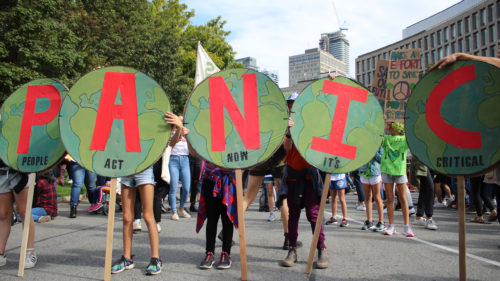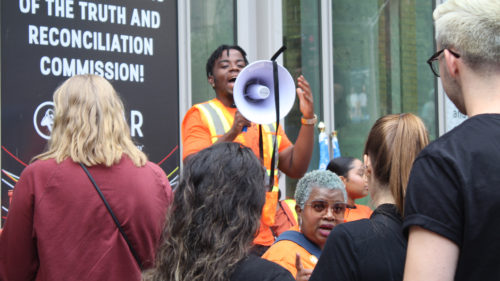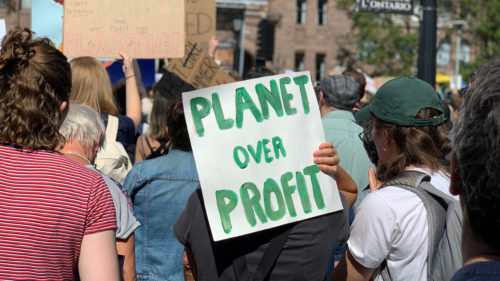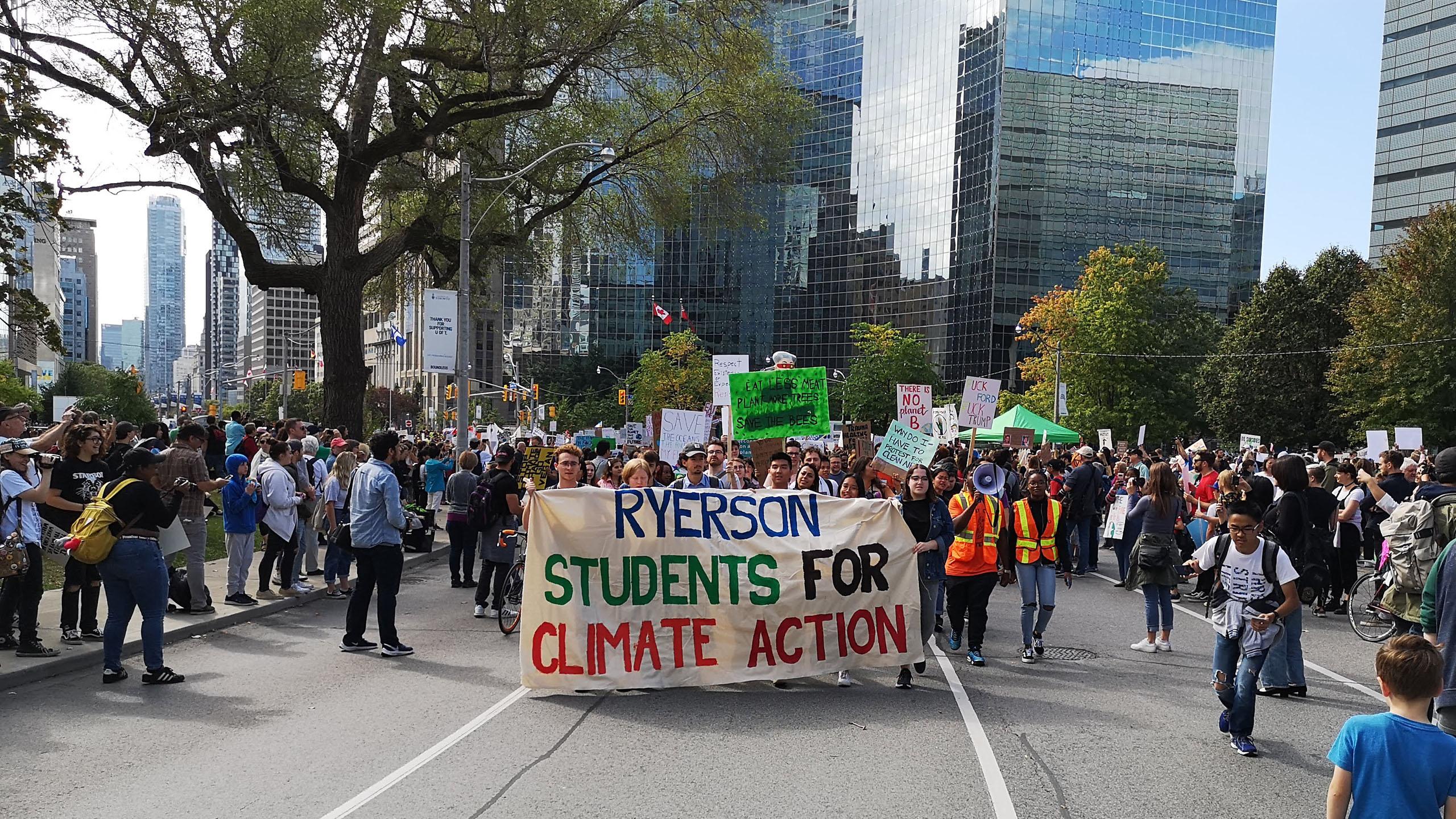By Charlize Alcaraz & Sarah Belas
Ryerson students gathered in front of the Student Campus Centre (SCC) on Friday to kick off their campus-wide walkover to Queen’s Park, where they joined thousands to march for the Global Strike for Climate Justice.
Members of the Continuing Education Students’ Association of Ryerson (CESAR) were the organizers of the walkover from campus, and encouraged students to make posters before marching together to Queen’s Park.
“I think that Ryerson is one of the leading campuses in Toronto, so I think that we really set the example on a lot of grounds,” said Nicole Brayiannis, president of CESAR.

Brayiannis also said that it’s important that Ryerson remains a leader in movements such as the climate strike to show what students want and what they’re really demanding.
The Eyeopener previously reported that while the university supported the climate strike, they would not cancel classes that day and students would have to speak to their professor about making up lost time. However, many students were able to leave class for the strike without penalty.
Maklane deWever, one of the organizers for the Ryerson walkover and former president of the Ryerson Students’ Union (RSU), says that he was granted amnesty from one of his professors to skip class.
“Hey, I’m not coming to class, I’m going to save the planet,” said deWever to his professor via email.
“I have a class at two, and they asked when participating at the climate [strike], just send a selfie with the crowd in the background, so I’m probably going to take a nice photo with everybody here real quick and just send that to my teacher,” said Kwaku Agyemang, RSU vice-president of education.

Ralliers made creative posters such as “This is not the hot girl’s summer I was hoping for” and even a simple imperative banner that said, “C’mon guys.”
The strike, inspired by 16-year-old Swedish activist Greta Thunberg’s Fridays for the Future protests, is an international youth climate strike where students leave their classes to draw attention to climate change and environmental crisis. People of all ages were at the strike, skipping both classes and leaving work.
Students who showed up expressed their desire for change and how important it is that they act now to shape a better future for their generation.
For first-year journalism student Abby Hughes, her reason for marching is that “older generations won’t be around to see the effects as long as we will. We’ll be dealing with this for most of our lives, so it’s important for us to do something to change our future.”
“For many movements, millennials and young people have been at the forefront for taking action,” said Agyemang. “Adults of the generation, as well as young people, understand that we’re gonna be bearing the [majority] of all these issues.”
But that doesn’t mean that members of previous generations aren’t fighting as well.

“We adults, we need to be shaken out of our selfishness, and our greed, and our apathy,” said Dianne Saxe, former Environmental Commissioner of Ontario in her speech at Queen’s Park. “We’ll tell everybody ‘Our house is on fire. Our house is on fire. We are almost out of time.’”
Indigenous rights activists were the main speakers of the event at Queen’s Park as they urged the crowd to remember that Indigenous people have been at the forefront in the fight for climate justice, calling on the government to be held accountable for their actions.
Cody Looking Horse, a representative of the Standing Rock Youth Council, urged people to be allies to Indigenous people and fight for climate justice.
“There are many organizations that are Indigenously-ran,” said Horse. “They’re always needing donations, they’re always needing money.”
“Donate to organizations like the International Indigenous Youth Council, Honour the Earth, that actually help the Indigenous people, help the environment, and help spread awareness of what the government is doing.”
In his powerful speech, Horse describes the Great Wars of the Sioux, a series of battles between Indigenous people and the United States, a “motivation to dismantle the system of oppression even more.”
“How does one sell the land? It is like selling our mother. How does one sell the stars? It is like trying to sell air.”
Following speakers included climate activists who used music to spread awareness of this global crisis, as well as youth activists, such as 16-year-old, Savi Gellatly–Ladd.
As Ryerson students merged into the massive crowd at Queen’s Park, Gellatly-Ladd was giving a speech hoping to empower and encourage those that attended this strike to continue.
“A lot of us haven’t done the things we want to do in life and we know that is our future at stake,” Gelattly-Ladd said in an interview. “Generationally, we’re at the frontlines of this crisis.”
When asked what she would say to those who didn’t attend or couldn’t, she said, “I think that for people that aren’t here and aren’t able to come out, that’s okay. There’s always a next time.”
“This fight isn’t just a one-time thing. It’s continuous.”











Leave a Reply